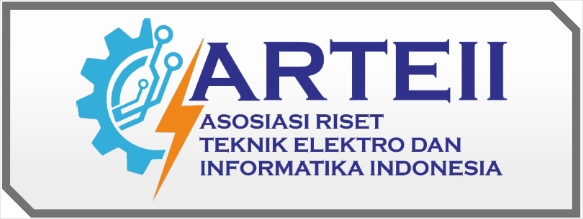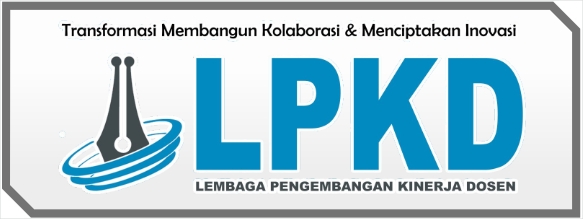The Impact of Carbon Emissions on the Green Economy and Sustainable Development in BRIIJC Countries
DOI:
https://doi.org/10.55606/icesst.v2i2.335Keywords:
CO2 Emissions, Green Economy, Sustainable DevelopmentAbstract
Increasing carbon emissions have the unintended consequence of worsening environmental quality as a result of the use of fossil fuels for green economic activities. The green economy concept is being applied in relation to social and economic difficulties, as well as sectors in one of the global strategic areas aimed at overcoming very rapid climate change. The green economy's quality is determined by CO2 emission levels and creates sustainable development, which can improve environmental quality in some countries (Brazil, Russia, India, Indonesia, Japan, and China), particularly during epidemics. In data analysis, various test procedures are utilized. According to the study findings, there was a considerable increase in CO2 emissions in the BRIIJC country during Covid 19, which had an impact on environmental quality, culminating in ozone layer depletion and climate change. The implementation of a green economy can affect environmental circumstances by requiring economic operations to use more ecologically friendly energy, and boosting energy can boost economic growth.
References
(Puppim De Oliveira et al. 2013) Acheampong, Alex O. 2018. “Economic Growth, CO2 Emissions and Energy Consumption: What Causes What and Where?” Energy Economics 74: 677–92.
Adedoyin, Festus Fatai, Festus Victor Bekun, Oana M. Driha, and Daniel Balsalobre-Lorente. 2020. “The Effects of Air Transportation, Energy, ICT and FDI on Economic Growth in the Industry 4.0 Era: Evidence from the United States.” Technological Forecasting and Social Change 160.
Afiftah, Ari T., Juliprijanto Whinarko., dan Destiningsih, R. 2019. “Analysis of The Effect of Government Consumption Expenditure and Household Consumption Expenditure in Indonesia in 1988-2017.” DINAMIC: Directory Journal of Economic 1(2): 11–22.
Antasari, Dewi Wungkus. 2020. “Implementasi Green Economy Terhadap Pembangunan Berkelanjutan Di Kota Kediri.” Jurnal Ekonomi Pembangunan STIE Muhammadiyah Palopo 5(2): 80–88.
Asiyah, S. 2017. “Penerapan Prinsip Ekonomi Hijau (Green Economy) Dalam Pengendalian Kebakaran Hutan Dan Lahan (Karhutla) Di Provinsi Kalimantan Tengah.” Skripsi, IAIN Palangkaraya. http://digilib.iain-palangkaraya.ac.id/id/eprint/1229.
Bhattacharyya, Rupsha. 2021. “Green Finance for Energy Transition, Climate Action and Sustainable Development: Overview of Concepts, Applications, Implementation and Challenges.” Green Finance 4(1): 1–35. http://www.aimspress.com/article/doi/10.3934/GF.2022001.
Bina, Olivia. 2013. “The Green Economy and Sustainable Development: An Uneasy Balance?” Environment and Planning C: Government and Policy 31(6): 1023–47.
Don Sama Lelo, Yosefina, Rini Dwi Astuti, and Sri Suharsih. 2018. “The Determinant of Inflation in Indonesia: Partial Adjustment Model Approach.” Jurnal Ekonomi & Studi Pembangunan 19(2): 157–66.
Droste, N. et al. 2016. “Steering Innovations towards a Green Economy: Understanding Government Intervention.” Journal of Cleaner Production 135: 426–34.
Falcone, Pasquale Marcello. 2020. 14 Int. J. Ekonomi Hijau Peraturan Lingkungan Dan Investasi Hijau: Peran Keuangan Hijau. www.onlinedoctranslator.com.
Faruque, Md Omer et al. 2022. “A Comparative Analysis to Forecast Carbon Dioxide Emissions.” Energy Reports 8: 8046–60.
Fu, Weiwei, and Muhammad Irfan. 2022. “Does Green Financing Develop a Cleaner Environment for Environmental Sustainability: Empirical Insights From Association of Southeast Asian Nations Economies.” Frontiers in Psychology 13.
goleman, daniel; boyatzis, Richard; Mckee, Annie. 2019. “Konsep Green Economy Dan Kebijakan Low Carbon Green Growth Korea Selatan.” Journal of Chemical Information and Modeling 53(9): 1689–99.
Gunay, Samet, Selma Kurtishi-Kastrati, and Kristina Krsteska. 2022. “Regional Green Economy and Community Impact on Global Sustainability.” Journal of Enterprising Communities.
He, Lingyun et al. 2019. “Green Credit, Renewable Energy Investment and Green Economy Development: Empirical Analysis Based on 150 Listed Companies of China.” Journal of Cleaner Production 208: 363–72. https://doi.org/10.1016/j.jclepro.2018.10.119.
Hudawan, Dian, and Farida Afriani. 2019. “Valuasi Deplesi Sumberdaya Air Dalam Rangka Penghitungan PDRB Semi Hijau Di Kota Malang , Jawa Timur Secara Konvensional PDRB ( Produk Domestik Regional Bruto ) Dipergunakan Untuk Mengukur Yang Lebih Baik , Dan Secara Signifikan Mengurangi Resiko Lingkung.” 2: 1–12.
İnal, Veysel et al. 2022. “The Nexus between Renewable Energy, CO2 Emissions, and Economic Growth: Empirical Evidence from African Oil-Producing Countries.” Energy Reports 8: 1634–43.
Kementerian PPN/Bappenas. 2020. “Green Economy Index : A Step Forward to Measure the Progress of Low Carbon and Green Economy in Indonesia.” Bappenas: 39.
Loiseau, Eleonore et al. 2016. “Green Economy and Related Concepts: An Overview.” Journal of Cleaner Production 139: 361–71.
Makmun. 2016. “Green Economy: Konsep, Implementasi, Dan Peranan Kementrian Keuangan.” Jurnal Ekonomi dan Pembangunan 19(2): 1–15. https://jurnalekonomi.lipi.go.id/index.php/JEP/article/view/60.
Mohammad Eneizan, Bilal, Assoc Kalsom Abd Wahab, Ummi Salwa Ahmad Bustaman, and Correspondence Bilal Mohammad Eneizan. 2015. “Sustainability, Green Marketing and Green Economy: Literature Review.” International Journal of Applied Research 1(12): 954–58. www.allresearchjournal.com.
Mutia, Annissa. 2022. “10 Negara Penyumbang Emisi Karbon Terbesar Di Dunia, Ada Indonesia!” Katadata.co.id 2: 2021. https://databoks.katadata.co.id/datapublish/2022/11/10/10-negara-penyumbang-emisi-karbon-terbesar-di-dunia-ada-indonesia.
Nababan, Yusniar Juliana, Yusman Syaukat, Bambang Juanda, and Slamet Sutomo. 2016. “Tantangan Bagi Pembangunan Berkelanjutan Di Kalimantan Timur: Menuju Inclusive Green Economy.” Masyarakat Indonesia 40(2): 211–28. http://jmi.ipsk.lipi.go.id/index.php/jmiipsk/article/view/118.
Olubunmi, Olanipekun Ayokunle, Paul Bo Xia, and Martin Skitmore. 2016. “Tinjauan Energi Terbarukan Dan Berkelanjutan Insentif Bangunan Hijau : Tinjauan.” 59: 1611–21.
Pan, Shu Yuan et al. 2018. “Advances and Challenges in Sustainable Tourism toward a Green Economy.” Science of the Total Environment 635: 452–69. https://doi.org/10.1016/j.scitotenv.2018.04.134.
Pitkänen, K. et al. 2016. “What Can Be Learned from Practical Cases of Green Economy? –Studies from Five European Countries.” Journal of Cleaner Production 139: 666–76.
Puppim De Oliveira, Jose A. et al. 2013. “Green Economy and Governance in Cities: Assessing Good Governance in Key Urban Economic Processes.” Journal of Cleaner Production 58: 138–52. http://dx.doi.org/10.1016/j.jclepro.2013.07.043.
Rany, Alya P., Salsabila A. Farhani, Vidya R. Nurina, and Laila M. Primada. 2020. “Tantangan Indonesia Dalam Mewujudkan.” Jiep 20(1).
Salebu, Jefry Batara. 2014. “The Impact of Foreign Direct Investment on Indonesian Economic Growth: Panel Data Analysis For The Period 1994-2013.” MPRA Paper (72830).
Shabunina, Tamara V., Svetlana P. Shchelkina, and Dmitriy G. Rodionov. 2017. “An Innovative Approach to the Transformation of Eco-Economic Space of a Region Based on the Green Economy Principles.” Academy of Strategic Management Journal 16(Specialissue1): 176–85.
Shuai, Su, and Zhang Fan. 2020. “Modeling the Role of Environmental Regulations in Regional Green Economy Efficiency of China: Empirical Evidence from Super Efficiency DEA-Tobit Model.” Journal of Environmental Management 261.
Siamanta, Zoi Christina. 2017. “Building a Green Economy of Low Carbon: The Greek Post-Crisis Experience of Photovoltaics and Financial ‘Green Grabbing.’” Journal of Political Ecology 24(1): 258–76.
St Nur Rahma, and Siradjuddin Siradjuddin. 2022. “Inovasi Hijau Sebagai Strategi Pengembangan Usaha Kecil Mikro Syariah.” NUKHBATUL ’ULUM: Jurnal Bidang Kajian Islam 8(1): 35–48.
Widyawati, RA Laksmi. 2018. “Green Building Dalam Pembangunan Berkelanjutan Konsep Hemat Energi Menuju Green Building Di Jakarta.” Karya Lintas Ilmu Bidang Rekayasa Arsitektur, Sipil, Industri 13: 01–17. https://ejournal.borobudur.ac.id/index.php/teknik/article/view/463.
Zheng, Weidan, Luni Zhang, and Jianbo Hu. 2022. “Green Credit, Carbon Emission and High Quality Development of Green Economy in China.” Energy Reports 8: 12215–26.















